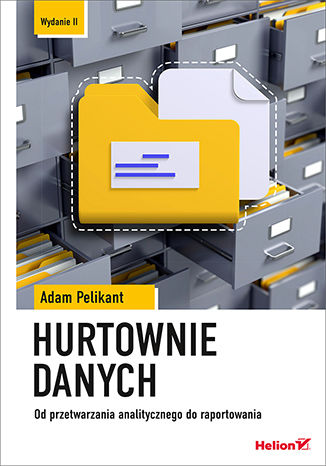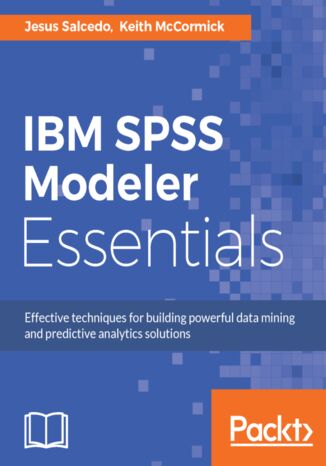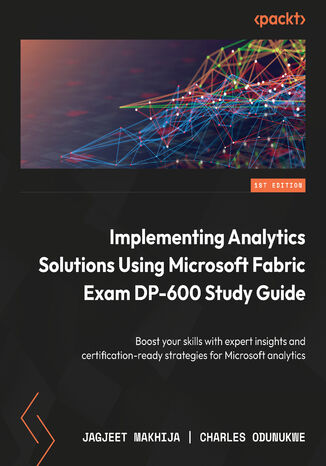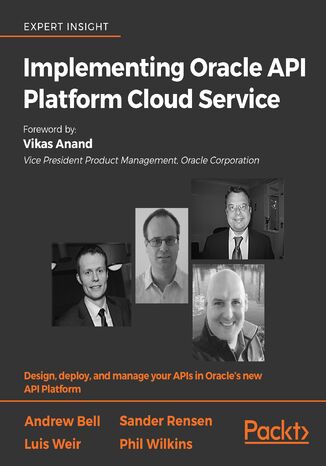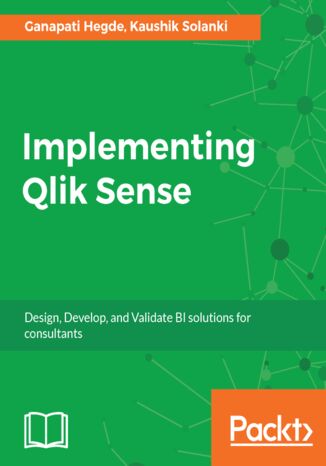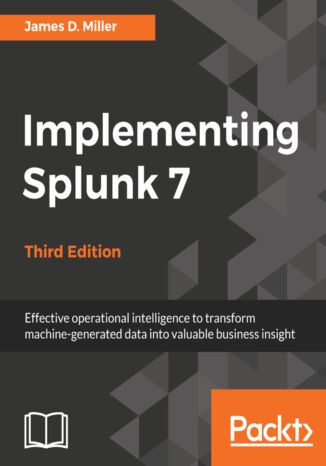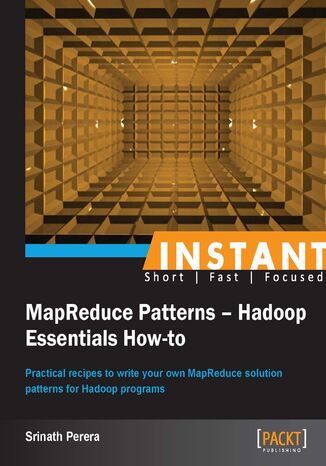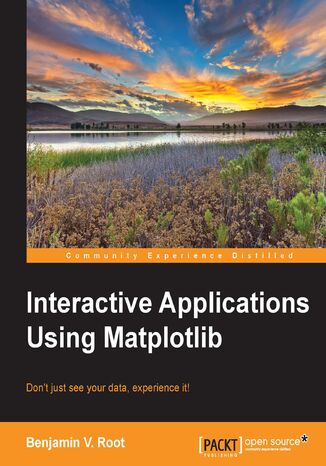Kategorien
E-Books
-
Wirtschaft
- Bitcoin
- Geschäftsfrau
- Coaching
- Controlling
- E-Business
- Ökonomie
- Finanzen
- Börse und Investitionen
- Persönliche Kompetenzen
- Computer im Büro
- Kommunikation und Verhandlungen
- Kleines Unternehmen
- Marketing
- Motivation
- Multimedia-Training
- Immobilien
- Überzeugung und NLP
- Steuern
- Sozialpolitik
- Handbȕcher
- Präsentationen
- Führung
- Public Relation
- Berichte, Analysen
- Geheimnis
- Social Media
- Verkauf
- Start-up
- Ihre Karriere
- Management
- Projektmanagement
- Personal (HR)
-
Für Kinder
-
Für Jugendliche
-
Bildung
-
Enzyklopädien, Wörterbücher
-
E-Presse
- Architektura i wnętrza
- Sicherheit und Gesundheit am Arbeitsplatz
- Biznes i Ekonomia
- Haus und Garten
- E-Business
- Ekonomia i finanse
- Esoterik
- Finanzen
- Persönliche Finanzen
- Unternehmen
- Fotografie
- Informatik
- HR und Gehaltsabrechnung
- Frauen
- Computer, Excel
- Buchhaltung
- Kultur und Literatur
- Wissenschaftlich und akademisch
- Umweltschutz
- meinungsbildend
- Bildung
- Steuern
- Reisen
- Psychologie
- Religion
- Landwirtschaft
- Buch- und Pressemarkt
- Transport und Spedition
- Gesundheit und Schönheit
-
Geschichte
-
Informatik
- Office-Programme
- Datenbank
- Bioinformatik
- IT Branche
- CAD/CAM
- Digital Lifestyle
- DTP
- Elektronik
- Digitale Fotografie
- Computergrafik
- Spiele
- Hacking
- Hardware
- IT w ekonomii
- Wissenschaftliche Pakete
- Schulbücher
- Computergrundlagen
- Programmierung
- Mobile-Programmierung
- Internet-Server
- Computernetzwerke
- Start-up
- Betriebssysteme
- Künstliche Inteligenz
- Technik für Kinder
- Webmaster
-
Andere
-
Fremdsprachen lernen
-
Kultur und Kunst
-
Lektüre
-
Literatur
- Anthologien
- Ballade
- Biografien und Autobiografien
- Für Erwachsene
- Drama
- Tagebücher, Memoiren, Briefe
- Epos
- Essay
- Science Fiction
- Felietonys
- Fiktion
- Humor, Satire
- Andere
- Klassisch
- Krimi
- Sachbücher
- Belletristik
- Mity i legendy
- Nobelpreisträger
- Kurzgeschichten
- Gesellschaftlich
- Okultyzm i magia
- Erzählung
- Erinnerungen
- Reisen
- Gedicht
- Poesie
- Politik
- Populärwissenschaftlich
- Roman
- Historischer Roman
- Prosa
- Abenteuer
- Journalismus
- Reportage
- Romans i literatura obyczajowa
- Sensation
- Thriller, Horror
- Interviews und Erinnerungen
-
Naturwissenschaften
-
Sozialwissenschaften
-
Schulbücher
-
Populärwissenschaft und akademisch
- Archäologie
- Bibliotekoznawstwo
- Filmwissenschaft
- Philologie
- Polnische Philologie
- Philosophie
- Finanse i bankowość
- Erdkunde
- Wirtschaft
- Handel. Weltwirtschaft
- Geschichte und Archäologie
- Kunst- und Architekturgeschichte
- Kulturwissenschaft
- Linguistik
- Literaturwissenschaft
- Logistik
- Mathematik
- Medizin
- Geisteswissenschaften
- Pädagogik
- Lehrmittel
- Populärwissenschaftlich
- Andere
- Psychologie
- Soziologie
- Theatrologie
- Teologie
- Theorien und Wirtschaftswissenschaften
- Transport i spedycja
- Sportunterricht
- Zarządzanie i marketing
-
Handbȕcher
-
Spielanleitungen
-
Professioneller und fachkundige Leitfaden
-
Jura
- Sicherheit und Gesundheit am Arbeitsplatz
- Geschichte
- Verkehrsregeln. Führerschein
- Rechtswissenschaften
- Gesundheitswesen
- Allgemeines. Wissenskompendium
- akademische Bücher
- Andere
- Bau- und Wohnungsrecht
- Zivilrecht
- Finanzrecht
- Wirtschaftsrecht
- Wirtschafts- und Handelsrecht
- Strafrecht
- Strafrecht. Kriminelle Taten. Kriminologie
- Internationales Recht
- Internationales und ausländisches Recht
- Gesundheitsschutzgesetz
- Bildungsrecht
- Steuerrecht
- Arbeits- und Sozialversicherungsrecht
- Öffentliches, Verfassungs- und Verwaltungsrecht
- Familien- und Vormundschaftsrecht
- Agrarrecht
- Sozialrecht, Arbeitsrecht
- EU-Recht
- Industrie
- Agrar- und Umweltschutz
- Wörterbücher und Enzyklopädien
- Öffentliche Auftragsvergabe
- Management
-
Führer und Reisen
- Afrika
- Alben
- Südamerika
- Mittel- und Nordamerika
- Australien, Neuseeland, Ozeanien
- Österreich
- Asien
- Balkan
- Naher Osten
- Bulgarien
- China
- Kroatien
- Tschechische Republik
- Dänemark
- Ägypten
- Estland
- Europa
- Frankreich
- Berge
- Griechenland
- Spanien
- Niederlande
- Island
- Litauen
- Lettland
- Mapy, Plany miast, Atlasy
- Miniführer
- Deutschland
- Norwegen
- Aktive Reisen
- Polen
- Portugal
- Andere
- Przewodniki po hotelach i restauracjach
- Russland
- Rumänien
- Slowakei
- Slowenien
- Schweiz
- Schweden
- Welt
- Türkei
- Ukraine
- Ungarn
- Großbritannien
- Italien
-
Psychologie
- Lebensphilosophien
- Kompetencje psychospołeczne
- zwischenmenschliche Kommunikation
- Mindfulness
- Allgemeines
- Überzeugung und NLP
- Akademische Psychologie
- Psychologie von Seele und Geist
- Arbeitspsychologie
- Relacje i związki
- Elternschafts- und Kinderpsychologie
- Problemlösung
- Intellektuelle Entwicklung
- Geheimnis
- Sexualität
- Verführung
- Aussehen ind Image
- Lebensphilosophien
-
Religion
-
Sport, Fitness, Diäten
-
Technik und Mechanik
Hörbücher
-
Wirtschaft
- Bitcoin
- Geschäftsfrau
- Coaching
- Controlling
- E-Business
- Ökonomie
- Finanzen
- Börse und Investitionen
- Persönliche Kompetenzen
- Kommunikation und Verhandlungen
- Kleines Unternehmen
- Marketing
- Motivation
- Immobilien
- Überzeugung und NLP
- Steuern
- Sozialpolitik
- Handbȕcher
- Präsentationen
- Führung
- Public Relation
- Geheimnis
- Social Media
- Verkauf
- Start-up
- Ihre Karriere
- Management
- Projektmanagement
- Personal (HR)
-
Für Kinder
-
Für Jugendliche
-
Bildung
-
Enzyklopädien, Wörterbücher
-
E-Presse
-
Geschichte
-
Informatik
-
Andere
-
Fremdsprachen lernen
-
Kultur und Kunst
-
Lektüre
-
Literatur
- Anthologien
- Ballade
- Biografien und Autobiografien
- Für Erwachsene
- Drama
- Tagebücher, Memoiren, Briefe
- Epos
- Essay
- Science Fiction
- Felietonys
- Fiktion
- Humor, Satire
- Andere
- Klassisch
- Krimi
- Sachbücher
- Belletristik
- Mity i legendy
- Nobelpreisträger
- Kurzgeschichten
- Gesellschaftlich
- Okultyzm i magia
- Erzählung
- Erinnerungen
- Reisen
- Poesie
- Politik
- Populärwissenschaftlich
- Roman
- Historischer Roman
- Prosa
- Abenteuer
- Journalismus
- Reportage
- Romans i literatura obyczajowa
- Sensation
- Thriller, Horror
- Interviews und Erinnerungen
-
Naturwissenschaften
-
Sozialwissenschaften
-
Populärwissenschaft und akademisch
- Archäologie
- Philosophie
- Wirtschaft
- Handel. Weltwirtschaft
- Geschichte und Archäologie
- Kunst- und Architekturgeschichte
- Kulturwissenschaft
- Literaturwissenschaft
- Mathematik
- Medizin
- Geisteswissenschaften
- Pädagogik
- Lehrmittel
- Populärwissenschaftlich
- Andere
- Psychologie
- Soziologie
- Teologie
- Zarządzanie i marketing
-
Handbȕcher
-
Professioneller und fachkundige Leitfaden
-
Jura
-
Führer und Reisen
-
Psychologie
- Lebensphilosophien
- zwischenmenschliche Kommunikation
- Mindfulness
- Allgemeines
- Überzeugung und NLP
- Akademische Psychologie
- Psychologie von Seele und Geist
- Arbeitspsychologie
- Relacje i związki
- Elternschafts- und Kinderpsychologie
- Problemlösung
- Intellektuelle Entwicklung
- Geheimnis
- Sexualität
- Verführung
- Aussehen ind Image
- Lebensphilosophien
-
Religion
-
Sport, Fitness, Diäten
-
Technik und Mechanik
Videokurse
-
Datenbank
-
Big Data
-
Biznes, ekonomia i marketing
-
Cybersicherheit
-
Data Science
-
DevOps
-
Für Kinder
-
Elektronik
-
Grafik / Video / CAX
-
Spiele
-
Microsoft Office
-
Entwicklungstools
-
Programmierung
-
Persönliche Entwicklung
-
Computernetzwerke
-
Betriebssysteme
-
Softwaretest
-
Mobile Geräte
-
UX/UI
-
Web development
-
Management
Podcasts
Datenanalyse
Hurtownie danych. Od przetwarzania analitycznego do raportowania. Wydanie II
Idea hurtowni danych ściśle wiąże się z ich kolosalnymi ilościami, gromadzonymi podczas tysięcy różnych sytuacji - przy dowolnej transakcji, w urzędzie, na lotnisku, w internecie... Nawet nasze połączenia telefoniczne są przechowywane przez operatora. Te wszystkie dane trzeba gdzieś pomieścić, sensownie posegregować i zapewnić sobie możliwość sięgnięcia do wybranego ich zakresu bez długotrwałych poszukiwań. Taką możliwość dają właśnie hurtownie danych - przemyślane, bardzo pojemne bazy, oferujące zarówno integrację wprowadzanych danych, jak i znakomite mechanizmy ich przeszukiwania. Jeśli chcesz poszerzyć swoją wiedzę na temat tworzenia i przeglądania zawartości hurtowni danych, trafiłeś pod właściwy adres! Książka Hurtownie danych. Od przetwarzania analitycznego do raportowania zawiera materiał przeznaczony nie tylko dla studentów wydziałów informatycznych, ale także dla pasjonatów tej tematyki oraz specjalistów zainteresowanych poszerzeniem wiedzy. W możliwie najprostszy, praktyczny sposób opisano w niej składnię i postać zapytań analitycznych, strukturę hurtowni danych oraz kwestię ich integracji i wizualnego tworzenia elementów hurtowni. Znajdziesz tu także omówienie analizy danych z wykorzystaniem rozszerzenia MDX SQL oraz zastosowań raportowania. Zapoznanie się z tymi informacjami oraz prześledzenie zgromadzonych tu przykładów pozwoli Ci zrozumieć problemy powstające przy budowie hurtowni danych i wykorzystać tę wiedzę we własnych projektach. Zapytania analityczne Struktura hurtowni danych Integracja danych Wizualne tworzenie elementów hurtowni danych Analiza danych z wykorzystaniem rozszerzenia MDX SQL Raportowanie
Jesus Salcedo, Keith McCormick
IBM SPSS Modeler allows users to quickly and efficiently use predictive analytics and gain insights from your data. With almost 25 years of history, Modeler is the most established and comprehensive Data Mining workbench available. Since it is popular in corporate settings, widely available in university settings, and highly compatible with all the latest technologies, it is the perfect way to start your Data Science and Machine Learning journey. This book takes a detailed, step-by-step approach to introducing data mining using the de facto standard process, CRISP-DM, and Modeler’s easy to learn “visual programming” style. You will learn how to read data into Modeler, assess data quality, prepare your data for modeling, find interesting patterns and relationships within your data, and export your predictions. Using a single case study throughout, this intentionally short and focused book sticks to the essentials. The authors have drawn upon their decades of teaching thousands of new users, to choose those aspects of Modeler that you should learn first, so that you get off to a good start using proven best practices. This book provides an overview of various popular data modeling techniques and presents a detailed case study of how to use CHAID, a decision tree model. Assessing a model’s performance is as important as building it; this book will also show you how to do that. Finally, you will see how you can score new data and export your predictions. By the end of this book, you will have a firm understanding of the basics of data mining and how to effectively use Modeler to build predictive models.
Jagjeet Singh Makhija, Charles Odunukwe
The DP-600 exam tests your ability to design and implement analytics solutions using Microsoft Fabric, including planning data analytics environments, managing data integration and security, and optimizing performance. Written by two Microsoft specialists with over three decades of combined experience, this book will help you confidently prepare for the DP-600 exam by teaching you the skills that are essential for effectively implementing and designing analytics solutions.You’ll explore data analytics in Microsoft Fabric in detail and understand foundational topics such as data exploration, SQL querying, and data transformation, alongside advanced techniques such as semantic model optimization, performance tuning, and enterprise-scale model design. The book addresses strategic planning, data integration, security, scalability, and the complete project lifecycle, including version control, deployment, and continuous improvement. You’ll also get to grips with practical SQL integration with Microsoft Fabric components, with mock exams to help you reinforce what you’ve learned.By the end of this book, you’ll be able to plan, implement, and optimize analytics solutions using Microsoft Fabric, and you'll be well-equipped with the practical skills needed to tackle real-world data challenges and pass the DP-600 exam.
Andrew Bell, Sander Rensen, Luis Weir, Phil Wilkins
Implementing Oracle API Platform Cloud Service moves from theory to practice using the newest Oracle API management platform. This critical new platform for Oracle developers allows you to interface the complex array of services your clients expect in the modern world.First, you'll learn about Oracle’s new platform and get an overview of it, then you'll see a use case showing the functionality and use of this new platform for Oracle customers. Next, you’ll see the power of Apiary and begin designing your own APIs. From there, you’ll build and run microservices and set up the Oracle API gateways. Moving on, you’ll discover how to customize the developer portal and publish your own APIs. You’ll spend time looking at configuration management on the new platform, and implementing the Oauth 2.0 policy, as well as custom policies. The latest finance modules from Oracle will be examined, with some of the third party alternatives in sight as well.This broad-scoped book completes your journey with a clear examination of how to transition APIs from Oracle API Management 12c to the new Oracle API Platform, so that you can step into the future confidently.
Implementing Qlik Sense. Design, Develop, and Validate BI solutions for consultants
Kaushik Solanki, Ganapati Hegde
Qlik Sense is a leading platform for business intelligence (BI) solutions. Qlik Sense helps organizations in making informed decisions based on the data they have.This book will teach you how to effectively use Qlik for optimum customer satisfaction. You will undergo a metamorphosis from a developer to a consultant who is capable of building the most suitable BI solutions for your clients. The book will take you through several business cases – this will give you enough insight to understand the needs of the client clearly and build a BI solution that meets or exceeds their expectations. Starting from the pre-project activities, you will go to the actual execution of the project, the implementation, and even maintenance. This book will give you all the information you need - from the strategy to requirement gathering to implementing BI solutions using Qlik Sense. The book will empower you to take the right decisions in tricky and diffi cult situations while developing analytics and dashboards.
Splunk is the leading platform that fosters an efficient methodology and delivers ways to search, monitor, and analyze growing amounts of big data. This book will allow you to implement new services and utilize them to quickly and efficiently process machine-generated big data. We introduce you to all the new features, improvements, and offerings of Splunk 7. We cover the new modules of Splunk: Splunk Cloud and the Machine Learning Toolkit to ease data usage. Furthermore, you will learn to use search terms effectively with Boolean and grouping operators. You will learn not only how to modify your search to make your searches fast but also how to use wildcards efficiently. Later you will learn how to use stats to aggregate values, a chart to turn data, and a time chart to show values over time; you'll also work with fields and chart enhancements and learn how to create a data model with faster data model acceleration. Once this is done, you will learn about XML Dashboards, working with apps, building advanced dashboards, configuring and extending Splunk, advanced deployments, and more. Finally, we teach you how to use the Machine Learning Toolkit and best practices and tips to help you implement Splunk services effectively and efficiently. By the end of this book, you will have learned about the Splunk software as a whole and implemented Splunk services in your tasks at projects
Liyanapathirannahelage H Perera
MapReduce is a technology that enables users to process large datasets and Hadoop is an implementation of MapReduce. We are beginning to see more and more data becoming available, and this hides many insights that might hold key to success or failure. However, MapReduce has the ability to analyze this data and write code to process it.Instant MapReduce Patterns – Hadoop Essentials How-to is a concise introduction to Hadoop and programming with MapReduce. It is aimed to get you started and give you an overall feel for programming with Hadoop so that you will have a well-grounded foundation to understand and solve all of your MapReduce problems as needed.Instant MapReduce Patterns – Hadoop Essentials How-to will start with the configuration of Hadoop before moving on to writing simple examples and discussing MapReduce programming patterns.We will start simply by installing Hadoop and writing a word count program. After which, we will deal with the seven styles of MapReduce programs: analytics, set operations, cross correlation, search, graph, Joins, and clustering. For each case, you will learn the pattern and create a representative example program. The book also provides you with additional pointers to further enhance your Hadoop skills.

